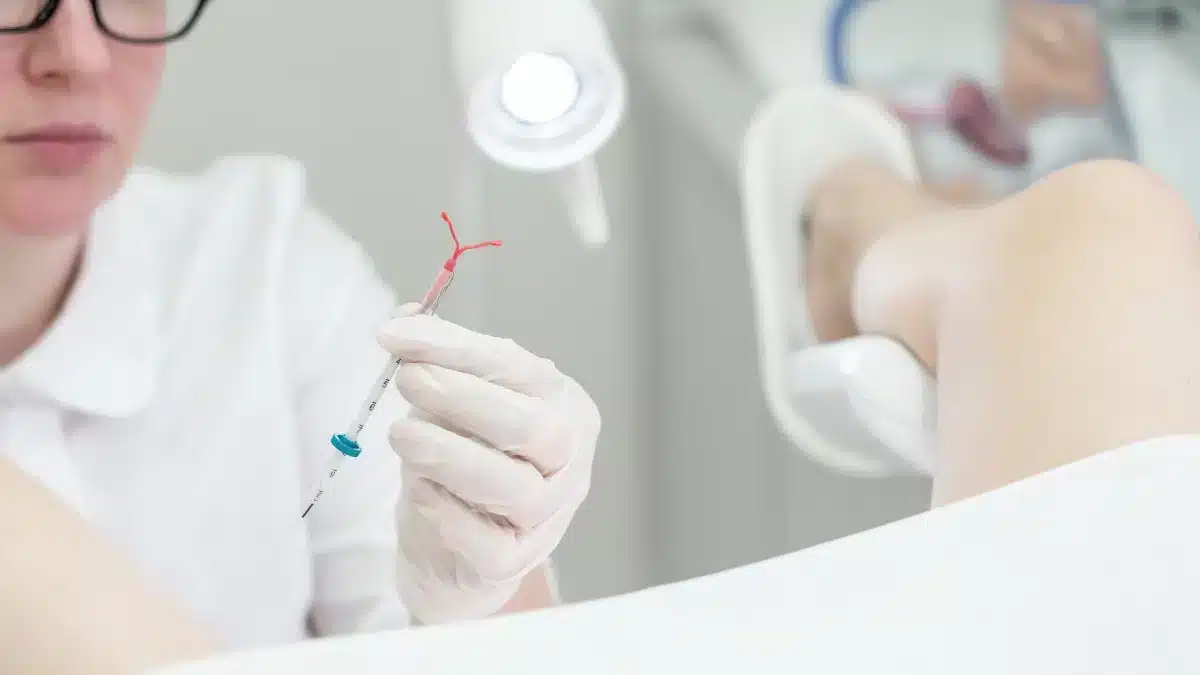Understanding Copper IUD Side Effects: What You Need to Know
Copper Intrauterine Devices (IUDs) are widely used contraceptive options known for their effectiveness and long-lasting protection against pregnancy.
According to the CDC, the failure rate for copper IUDs is 0.8%.
However, like any medical intervention, they come with potential side effects that copper IUD users should be aware of.
In this article, we will explore both common and serious copper IUD side effects.
Common side effects
The use of the copper IUD, such as Paragard, is a popular choice for long-term contraception, offering effectiveness without hormonal components.
While many women find it reliable, it’s important to be aware of potential side effects.
Some common side effects you may experience include:
Anaemia (low red blood cell count)

Anaemia is characterized by a deficiency of red blood cells, leading to reduced oxygen-carrying capacity in the blood.
Some copper IUD users may experience mild anaemia as a side effect, and it is becoming a significant risk.
Backache
Backache is another common side effect reported by some women using Paragard.
This discomfort may be associated with muscle tension due to the presence of the IUD.
Pain during sex
Some individuals may also report pain or discomfort during sexual intercourse as a side effect of Paragard.
This can be due to increased sensitivity or the IUD’s presence affecting the uterine environment.
Vaginal discharge
Changes in vaginal discharge are common when using a copper IUD.
While an increase in discharge may not necessarily indicate a problem, monitoring for any unusual changes or signs of infection is essential.
Prolonged periods
Copper IUD users may experience longer menstrual periods.
The copper IUD promotes an inflammatory response, leading to increased blood flow during menstruation.
Spotting
Spotting between periods is another side effect.
Hormonal IUDs release a small amount of Progestin, which can affect the lining of the uterus. Changes in the uterine lining may lead to irregular bleeding or spotting.”
While occasional spotting is generally considered normal, a healthcare professional should promptly address persistent or heavy bleeding.
Pain and cramping
Increased pain and cramping are common side effects, particularly during the first few months after IUD insertion.
The body’s adjustment to the presence of the IUD can contribute to these symptoms.
Vaginal irritation
Some individuals may experience vaginal irritation as a result of the copper IUD.
This can manifest as itching, redness, or discomfort in the vaginal area.
Serious side effects
The less common yet severe complications can arise from using copper IUDs.
While such events are infrequent, recognizing the signs and symptoms of serious complications can ensure the well-being of those utilizing the copper IUD.
Ectopic pregnancy

If pregnancy occurs while using Paragard, there are risks of ectopic pregnancy and Intrauterine pregnancy.
Ectopic pregnancies are mostly life-threatening and may require medical intervention.
However, the risk of ectopic pregnancy occurring is 2 out of 10,000 women in hormonal IUDs and 5 out of 10,000 women in copper IUDs.
Life-threatening infection
There is a risk of a life-threatening infection within the first few days after the IUD is placed.
Symptoms such as severe pain or fever shortly after insertion should be reported to a healthcare provider immediately.
Pelvic Inflammatory Disease (PID)
Users of copper IUDs may be at risk of developing serious pelvic infections, such as PID or Endometritis.
These infections, often sexually transmitted, can lead to complications such as infertility, ectopic pregnancy, and persistent pelvic pain.
Severe cases may require surgery, including hysterectomy.
Embedment
Copper IUD may become embedded in the wall of the uterus, making removal difficult.
In some cases, surgery may be necessary to extract the IUD.
Perforation
There is a risk of the IUD perforating the wall of the uterus, potentially leading to the IUD moving outside the uterus.
This can result in internal scarring, infection, damage to other organs, pain, and infertility. Surgical intervention may be required to remove the IUD.
Expulsion
Paragard, a copper IUD may partially or completely fall out of the uterus on its own, known as expulsion.
This can occur in about 2 out of 100 women using the IUD.
Excessive pain, bleeding, or the inability to feel the threads may indicate expulsion, and users are not protected from pregnancy if the IUD is expelled.
Reactions after placement or removal
Some women may experience adverse reactions such as dizziness, slowed heart rate, or seizures immediately after the placement or removal of copper ID, like Paragard.
You will experience these conditions, particularly if you have a history of these conditions.
Conclusion
While copper Intrauterine Devices like Paragard offer effective and long-lasting contraception, users must be informed about potential side effects.
Common side effects, such as mild anaemia, backache, and changes in menstrual patterns, are often manageable and may diminish over time as the body adjusts to the IUD.
However, users should also be vigilant about the possibility of more serious side effects.
These include the risk of ectopic pregnancy, life-threatening infections, and pelvic inflammatory diseases.
Although these complications are relatively rare, it is essential for individuals to report any unusual symptoms to their healthcare providers.
The decision to use a copper IUD should be made by consulting a healthcare provider, considering individual health history, lifestyle, and preferences.
Frequently Asked Questions
Can copper IUD cause hair loss?
Hair loss is not a common side effect associated with copper IUD use. Typically, hormonal changes, stress, nutritional deficiencies, or underlying health conditions are more likely causes of hair loss. If you experience unusual hair loss, consult a healthcare professional to determine the root cause.
Do copper IUDs stop periods?
Copper IUDs do not typically stop periods. Some women may experience changes in their menstrual bleeding patterns, including heavier and longer periods. The device creates an inflammatory response in the uterus, increasing menstrual flow. If you have concerns about period changes, consult your doctor.
What happens if copper IUD is not removed after expiry?
Copper IUDs typically work for 5 to 10 years, depending on the brand and type. If the copper IUD is not removed after reaching its expiration date, its contraceptive effectiveness cannot be guaranteed. There is no immediate danger associated with keeping an expired copper IUD in place.
Can my partner feel my IUD?
It’s uncommon for a partner to feel the presence of an IUD during sexual intercourse. The IUD has strings, which may hang into the upper part of the vagina. If your partner experiences discomfort or is aware of the IUD during sex, contact your doctor to ensure proper placement.
WowRx uses only high-quality sources while writing our articles. Please read our content information policy to know more about how we keep our content reliable and trustworthy.






